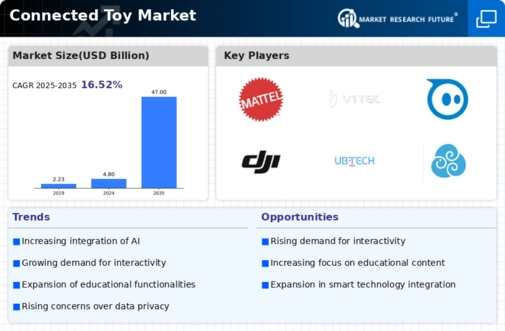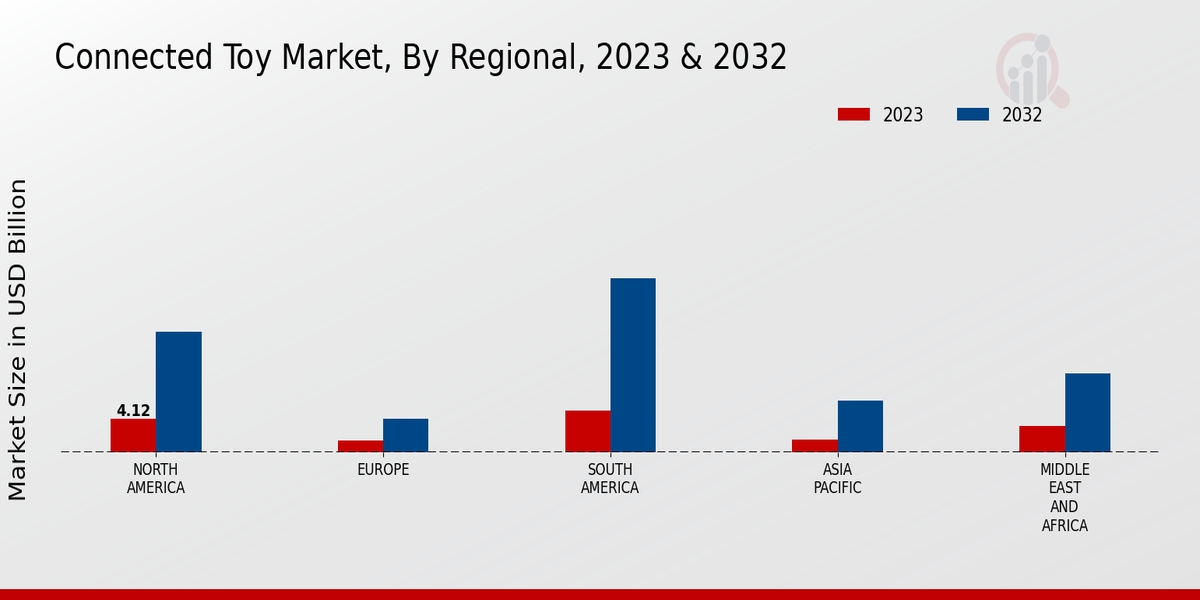Connected Toy Market Summary
The Global Connected Toy Market is projected to grow from 8.75 USD Billion in 2024 to 47.03 USD Billion by 2035.
Key Market Trends & Highlights
Connected Toy Key Trends and Highlights
- The market is expected to experience a compound annual growth rate (CAGR) of 23.05 percent from 2025 to 2035.
- By 2035, the market valuation is anticipated to reach 47.0 USD Billion, indicating substantial growth opportunities.
- in 2024, the market is valued at 8.75 USD Billion, laying a strong foundation for future expansion.
- Growing adoption of connected technology due to increasing consumer demand for interactive play experiences is a major market driver.
Market Size & Forecast
| 2024 Market Size | 8.75 (USD Billion) |
| 2035 Market Size | 47.03 (USD Billion) |
| CAGR (2025-2035) | 16.52% |
Major Players
Mattel, VTech, Sphero, DJI, Ubtech, CloudPets, Kano, Hasbro, Spin Master, LeapFrog, Anki, Amazon, Wowwee, Xiaomi, Wonder Workshop
























